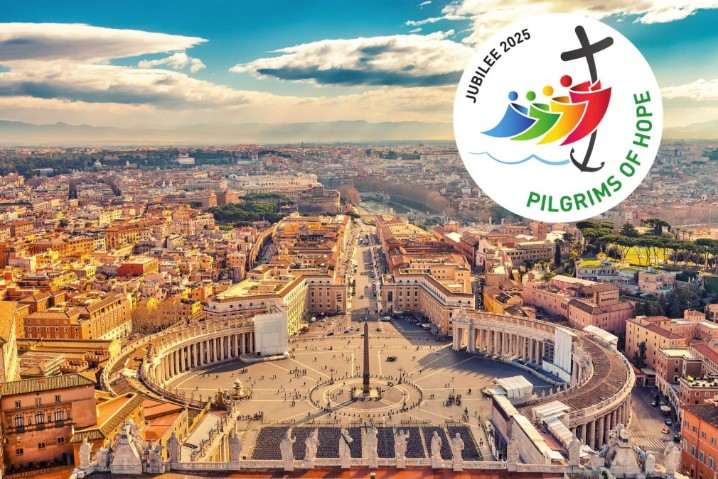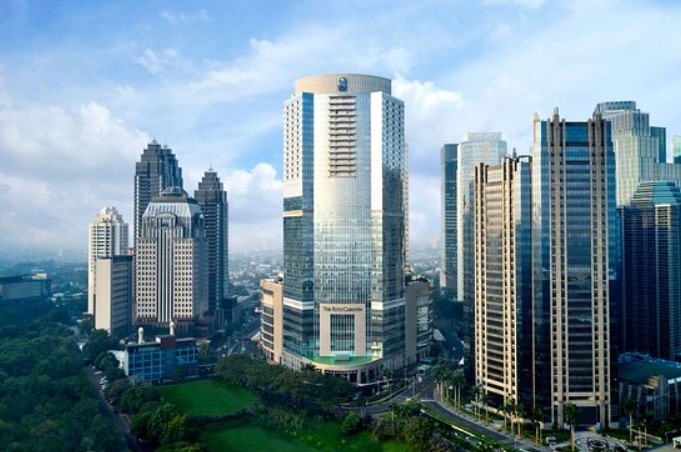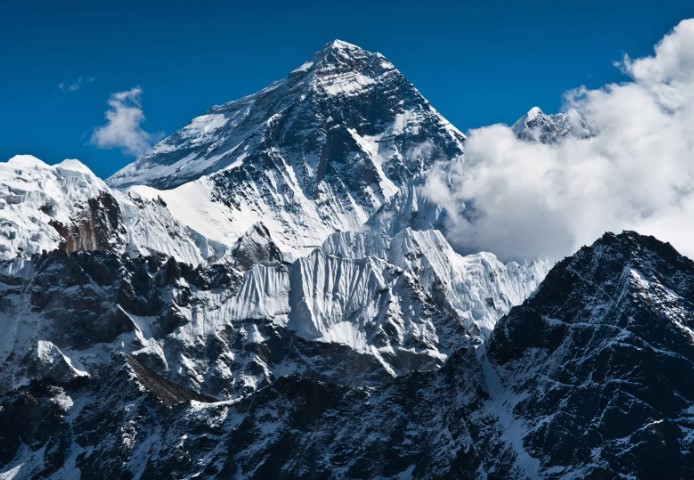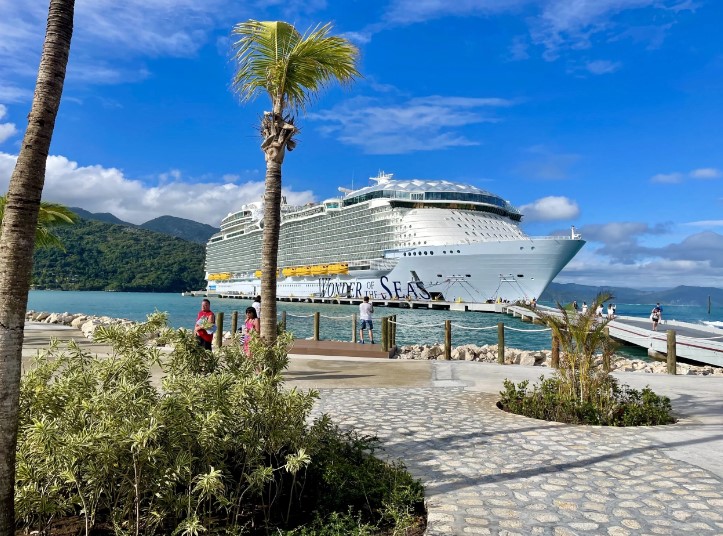The Alps are the largest mountain chain in Europe – and one of the longest and highest mountain ranges in the world. Their majesty stretches for more than 700 miles across eight countries, with the highest peak, Mont Blanc, sitting near France’s border with both Italy and Switzerland. Combined with its proximity to Lake Geneva, the French portion of the Alps offers some of the most picturesque ski resorts, alpine villages and vacation opportunities in the world.
Skiing, while not required to enjoy your visit, is a huge part of the French Alps culture – as is the après-ski (literally “after-ski”), which is what happens when the skis come off. In the summer, it’s all about the Tour de France, an annual men’s cycling competition that passes through the Alps. Travelers can soak in natural hot springs to unwind after a day spent hitting the slopes, exploring by cable car or doing nothing at all. Strap on your skis and pack your hiking boots for these top destinations in the postcard-worthy French Alps, one of the best places to visit in France.
(Note: Some of the following activities, attractions and locations may be affected by the COVID-19 pandemic. New policies may be in place, including capacity restrictions, reservation requirements or mask mandates. Check with the Centers for Disease Control and Prevention, the U.S. Department of State and local tourism boards before traveling.)
Chamonix-Mont-Blanc

(Getty Images)
The first Winter Olympics were held in 1924 in Chamonix-Mont-Blanc. The town, more commonly referred to as Chamonix, sits in the heart of France’s Haute-Savoie department, a subdivision of the Auvergne-Rhône-Alpes region (like how the U.S. has counties within states). A century after those incipient Olympic Games, this scenic area in southeastern France – bordering Italy and Switzerland – continues to welcome visitors from around the world to take part in its premiere skiing and snow-gazing opportunities. You’ll find the country’s highest cable car in Chamonix at the Aigulle du Midi mountain. Advanced skiers and those simply brave enough to take the journey will venture more than 12,600 feet into the sky to the starting point for the Vallée Blanche. This “off-piste” area of the French Alps – where the snow is not specially prepared for skiing – offers up glacial skiing and celestial vantage points from the foot of the Mont Blanc massif mountain range.
For those more comfortable on rails rather than skis, book a ride on the Montenvers-Mer de Glace train. This cherry-red cogwheel train carries passengers from Chamonix to Montenvers for access to the Mer de Glace (Sea of Ice), the biggest glacier in France. Visitors will have the opportunity to visit an ice cave in the glacier and learn more about both its history and future amid climate change. When you’re done exploring, warm up with a traditional meal at the Refuge du Montenvers restaurant before heading back to Chamonix.
Aix-les-Bains

(Getty Images)
Set on the eastern shore of Lac du Bourget – France’s largest natural lake – Aix-les-Bains is an inviting Savoy resort town in the Auvergne-Rhône-Alpes region. It once hosted the summer escapades of royalty, along with American author Mark Twain. The glacial waters of the Lac du Bourget set a relaxed ambiance, easily discovered by strolling the Esplanade du Lac, a lakeside park and walkway shaded by trees. The rugged mountain landscape can be glimpsed across the lake as well as the Hautecombe Abbey, a former monastery where many members of the House of Savoy are buried. Mont Revard is a prime example of the limestone cliffs found in Aix-les-Bains. The ski station at the top boasts an impressive network of cross-country ski trails for winter visitors, while in summer skilled cyclists attempt the ascent – including the competitors of the Tour de France, which has been held here numerous times. Visitors claim the views are stupendous, even if you arrive by car.
If you seek a more low-key vacation in Aix-les-Bains, while away the days at the Musée Faure, an art museum, featuring the works of Rodin and impressionist paintings, or take a daylong soak in the restorative waters of the spa town’s thermal baths. Those who appreciate architectural aesthetics will be in awe of the Roman ruins here, like the Temple of Diana, found alongside belle epoque structures including the Casino Grand Cercle and the hotel Le Mirabeau.
Alpe d’Huez

(Getty Images)
At more than 6,000 feet above sea level, Alpe d’Huez is a year-round resort town in the French Alps. Its Pic Blanc glacier reaches nearly 11,000 feet and is accessible in winter or summer. Alpe d’Huez has earned the nickname “Island of the Sun” for its abundant days of sunshine on the slopes, which warm skiers and snowboarders of all ages and abilities.
You may start your stay by marveling at the Grotte du Glace, an ice cave at the top of one of the ski lifts that features sculptures. The lifts continue to operate even in July and August for hikers and mountain bikers looking to take advantage of 21 thrilling hairpin bends regularly employed in the Tour de France. The lifts also grant access to the smaller Alpine villages of Vaujany and Oz en Oisans from Alpe d’Huez. While most local restaurants in town are known for cream- and cheese-based cuisine, the newly renovated Le Génépi serves a menu of plates made with fresh, local ingredients. Recent patrons call the restaurant a much-needed infusion of culinary excellence in this French Alps town with its unique dishes and scenic views from the terrace.
Chablais UNESCO Global Geopark
The mountainous area known as the Chablais UNESCO Global Geopark is set on the France-Switzerland border and spans more than 60 French towns. The Chablais’ name means “head of the lake,” referring to Lake Geneva. The UNESCO recognition acknowledges the area’s millions of years of geological history alongside cultural heritage such as local cheese- and wine-making practices. The Chablais was designated a “geopark” to highlight the bond between people and nature here, something evident throughout the French Alps given the emphasis on water and natural springs. UNESCO offers a tourist map online that showcases some of the many places to visit throughout the Chablais – abbeys, castles, museums and more. Visitors to the Musée de la Musique Mécanique (Mechanical Music Museum) in Les Gets were surprised by the abundant instruments it displays, with plenty of quirky and antique contraptions to spend an hour ogling.
Évian-les-Bains

(Getty Images)
Within the Chablais UNESCO Global Geopark, Évian-les-Bains is widely known for its mineral springs – you may also recognize it as the namesake for a popular water bottle company – but this quintessential French spa town quenches a thirst for beauty as well as water. Located on the southern shore of Lake Geneva, Évian-les-Bains was a favorite of the Lumière family: the very same Lumières credited with helping invent modern cinema. Villa Lumière was the family’s summer residence, and self-guided tours of the now-hotel are allowed on weekdays. The Palais Lumière, which constituted the formal thermal baths during the early 20th century, houses cultural and art exhibitions today. The neoclassical-style theater, dating to 1883, was created by a student of Charles Garnier, the architect who built the Opéra Garnier in Paris.
The Pré Curieux water gardens in Évian-les-Bains, meanwhile, are a unique lakeside habitat used for research but open to guests who come by solar-powered boat with a guide from May through October. If you seek something to do around the winter holidays instead, check out Le Fabuleux Village des Flottins, a festival of magical creatures created out of driftwood from the shores of Lake Geneva and elevated with light displays. Past participants rave that the flottin sculptures are unusual and breathtaking – and advise not to miss the stalls of “vin chaud” (hot mulled wine) and pancakes along the parade route. Whenever you visit this quaint French Alps destination, don’t miss a Michelin-starred meal at the restaurant Les Fresques.
Courchevel

(Getty Images)
Courchevel is a skiing enthusiast’s dream, with one resort spread across six villages near Vanoise National Park, a nature preserve that was France’s first national park. This French Alps ski resort is part of Les Trois Vallées (the Three Valleys), which is the largest linked ski area in the world. There are more than 100 ski runs – and plenty of moguls for snowboarders and snowmobilers – across a variety of experience levels. Skiers who prefer abundant off-piste territory should give nearby resort Val Thorens a try. Méribel, meanwhile, another ski resort in Les Trois Vallées that neighbors Courchevel, caters to families. Part of the appeal of ski culture is the offerings when you’re done with the slopes; après-ski at Courchevel includes the bustling Le Tremplin restaurant and the Copiña Courchevel bar, where tapas, beer, wine and cocktails are served in a sleek setting. Guests say the friendly staff, delicious drinks and upbeat atmosphere – sometimes with live music – made them return to Copiña Courchevel again and again.
Serre Chevalier

(Getty Images)
Within France’s Haute-Alpes department are four communes (the French equivalent of towns) that make up the Serre Chevalier valley and ski resort, where sunshine is plentiful throughout the year. In the valley of the Guisane river, between the Cerces mountain range and Écrins National Park, you’ll find the commune of Le Monêtier-les-Bains, a former Roman city complete with thermal baths that today are open from May to December. Spagoers at Les Grands Bains du Monêtier note that the facilities can get crowded but a soak is a must, especially after a day spent skiing or hiking.
Another commune, Briançon, serves as a UNESCO World Heritage Site with plenty of history to explore; it’s also one of the highest towns in Europe at an altitude of more than 4,300 feet. At the summit of Serre Chevalier, take in a panorama of Écrins from 3,600 feet up on your way down the summertime zip line. If you have younger family members in tow, kids aged 4 to 12 can make use of the valley’s high-altitude wooden playground called Marmot Camp, named for the squirrel-like alpine marmot.
Val d’Isère

(Getty Images)
Festivals keep things lively year-round at Val d’Isère, a French ski resort town near the Italian border. In the summer, sporting and cultural events like races and festivals entertain locals and travelers alike. Val d’Isère is one of the top hosts of FIS Alpine Ski World Cup competitions, and it’s famed for high-difficulty and off-piste skiing. But you don’t have to know what you’re doing to enjoy the skiing here, which visitors call seamless and user-friendly, with plenty of instructors for all levels of ability and reasonably priced lift tickets. The Alpine resort town also prides itself on its après-ski scene: The stunning Bar de l’Ouillette, for example, serves crepes lakeside. Les 3 Caves – comprising three locations at La Folie Douce – boasts a high-altitude wine cellar, a cave for cheese and one for cigars.
Saint-Gervais-les-Bains

(Getty Images)
About 40 miles from Geneva, Switzerland, sits Saint-Gervais-les-Bains, a small French town that makes a pleasant jumping-off point for daytrips to Chamonix or longer sojourns to the Swiss city of Lausanne or Turin, Italy. Saint-Gervais, surrounded by Mont Blanc among other towering peaks, is also a top French Alps destination in its own right, with bountiful eateries and plenty of mountain air to inhale. Take a 70-minute ride on the Mont Blanc tramway for scenic views; a 30-minute walk from the top gets you to the Bionnassay Glacier. You can also head to the cable car on the western part of Saint-Gervais to ascend to Le Bettex, a small village in the mountains. Stop here to dine at La Flèche d’Or, a hotel and restaurant serving traditional Savoie dishes with local produce, then continue in the cable car to Mont d’Arbois for the best views. Back in Saint-Gervais, Les Bains du Mont Blanc is a world-class thermal spa making use of the region’s naturally warm water.
Mercantour National Park

(Getty Images)
Provence-Alpes-Côte d’Azur, the most southeastern region of France, houses the iconic French Riviera (Côte d’Azur) alongside a stretch of the Alps. Spread across the region’s Alpes-Maritimes and Alpes-de-Haute-Provence departments is Mercantour National Park, about 30 miles from Nice. Multiple valleys, including the Ubaye Valley, are part of this more than 250-square-mile national park, which is home to more than 2,000 species of flowering plants as well as thousands of petroglyphs from the Bronze Age. Park trails covering nearly 400 miles will expose you to the biodiversity of this unspoiled natural haven in the southern French Alps. Tourists may enjoy kayaking the turquoise waters of the Verdon River through the Verdon Gorge or hiking around the rim of the canyon. The wild and unspoiled Ubaye Valley draws outdoor enthusiasts, who find their way to its town of Barcelonnette to hike, canoe and ski.
Grenoble

(Getty Images)
Grenoble, France, is the European Green Capital for 2022, meaning this destination is an eco-friendly option for a French Alps vacation. The mountains and the metropolitan city work in harmony, offering visitors the restaurants and accommodations of a big city along with the natural sights of protected environments like the nearby Chartreuse Regional Nature Park. Speaking of green, the Grande Chartreuse monastery – situated in the Chartreuse mountain range north of Grenoble – is the home of the Carthusian monks who safekeep the secret recipe of green chartreuse liqueur to this day. The monastery isn’t open to the public, but you can visit the nearby Grand Chartreuse museum to learn more about the Carthusian Order.
The Belledonne mountain range, meanwhile, is known for breathtaking vistas, including swirling sunsets. Beyond biking, hiking and skiing, thrill-seekers can paraglide here or take it slow in the winter with snowshoeing. In the city itself, La Bastille is a fort at the center of Grenoble, perfect for an afternoon spent above the city – a cable car will take you there, or you can hike to the top. About 10 miles south of Grenoble, the French-style gardens and chateau of Domaine de Vizille are so elegant you might not expect the Museum of the French Revolution is housed here, but art and artifacts combine in the castle’s galleries to walk you through that historical period. Kids will love spotting the swans, ducks, deer and other animals that roam freely on the protected grounds.
La Clusaz

(Getty Images)
Wine and cheese – some of the best you’ve ever tasted – are abundant throughout France. And according to La Clusaz, a commune roughly 40 miles west of Chamonix in the Auvergne-Rhône-Alpes region, these French staples are something to be celebrated. The annual Fête du Reblochon (Reblochon Festival) exalts cheese and the local farmers who produce it with demonstrations, tastings, a parade, and plenty of folk dancing and merriment. Aside from cheese, chocolate truffles, white vermouth and certain wine varietals are all local specialties.
Recent visitors to La Clusaz call it a lovely little ski town with ample restaurants and cozy bars to keep refreshed. If you want to burn off some calories du fromage, head to Col des Aravis for hiking trails with iconic French Alps views: the white-capped Mont Blanc, pine trees, mountain flowers, a glacial lake and even a tiny chapel. Adventure lovers visiting La Clusaz may want to try out equestrian skijoring, which is the sport of being pulled by a horse through the snow on skis – not for the faint of heart.
Megève

(Getty Images)
Megève has been the stage city for the Tour de France only twice, but its elegant atmosphere makes it a sensible choice for hosting events that draw crowds from across the country – and the globe – including the annual equestrian Jumping International de Megève. When there is not a prestigious sporting event in town, tourists in Megève can still find world-class dining and shopping. For example, chef Anne-Sophie Pic, the most Michelin-starred woman in the world, helms La Dame de Pic – Le 1920, the restaurant at the Four Seasons Hotel Megève. The village shops span antique furniture to local produce to popular fashion brands. When you need a rest from shopping, stop in for tea by day and Champagne in the evening at Le Georges in the luxe Hotel Mont Blanc. A variety of child and teen programming in Megève invites the whole family to vacation, with a variety of sports courses and cultural workshops.
Yvoire

(Getty Images)
Often considered one of France’s most beautiful villages, Yvoire is part of the Chablais UNESCO Global Geopark area for good reason, considering its 700 years of history and present-day charm. Like so many classic French Alps towns, Yvoire is nestled on the shores of Lake Geneva; its nickname is “gem of the lake.” Built in 1306, Château d’Yvoire (Yvoire Castle) is a landmark in the medieval town that remains standing today; while not open to the public, it makes for an impressive photograph. On the other hand, the Jardin des Cinq Sens (Garden of the Five Senses) entices sightseers with gardens to explore through touch and smell. Visitors to the gardens mention that it is tucked away, but once you find it your senses will thank you. This romantic destination in the French Alps reserves its streets for pedestrians, so you can stroll hand in hand to your heart’s content. What’s more, flowers are so plentiful in Yvoire that it is often called the “French flower village.”






More Stories
Most Beautiful Waterfalls in the World: A Nature’s Masterpiece
10 best summer travel destinations in the US for 2023
10 Cheap Vacation Spots In Washington DC That Won’t Break The Bank